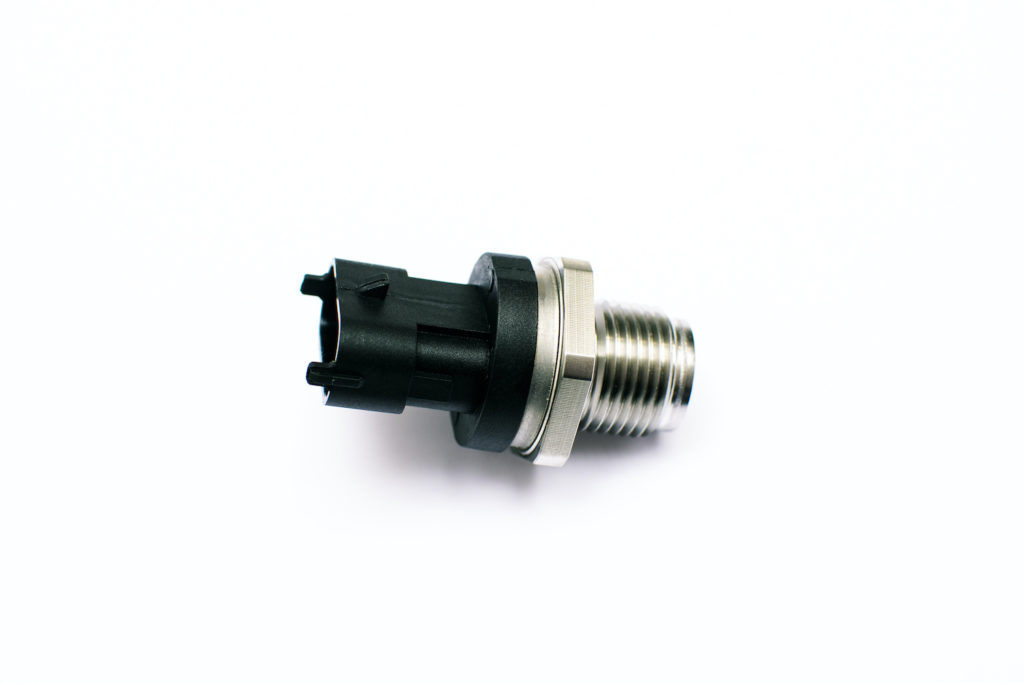Introduction

Image: www.carparts.com
When your car’s “Check Engine” light illuminates, it can be a harbinger of both concern and confusion. One common code that may appear is P0193, indicating a problem related to fuel pressure. Fixing this issue can be crucial for ensuring optimal engine performance and preventing further damage. This comprehensive article will delve into the causes, symptoms, and step-by-step procedures to diagnose and resolve the P0193 code.
Understanding the P0193 Code
The P0193 code indicates a fault in the fuel rail pressure sensor circuit. This sensor plays a pivotal role in monitoring the fuel pressure within the fuel rail, ensuring the proper delivery of fuel to the engine. When the Powertrain Control Module (PCM) detects an issue with this circuit, such as an out-of-range signal or an intermittent connection, it triggers the P0193 code.
Symptoms of the P0193 Code
While the P0193 code primarily affects fuel pressure monitoring, it can manifest through several symptoms that may vary depending on the vehicle. Some common signs include:
- Engine running lean or rich: Improper fuel pressure can lead to fuel mixture imbalances, causing the engine to run lean (too much air) or rich (too much fuel).
- Loss of power: Insufficient fuel delivery can hinder engine performance, resulting in poor acceleration and a noticeable lack of power.
- Rough idling or stalling: Intermittent fuel pressure issues can cause the engine to idle roughly or even stall while driving.
- Increased fuel consumption: An engine running lean due to low fuel pressure may compensate by increasing fuel injection, leading to reduced fuel efficiency.
Diagnosing the P0193 Code
Diagnosing the P0193 code requires a systematic approach to identify the root cause of the issue. Here’s a step-by-step guide:
- Check the fuel pressure sensor: Using a fuel pressure gauge, verify if the fuel pressure is within the specified range provided in your vehicle’s service manual. A malfunctioning sensor may provide inaccurate readings or fail to send signals, leading to the P0193 code.
- Inspect the wiring harness: Examine the electrical connections to the fuel pressure sensor for any signs of corrosion, loose connections, or damage to the wires. Repair or replace any faulty components as necessary.
- Test the PCM: If the fuel pressure sensor and wiring appear to be in order, the issue may lie with the Powertrain Control Module. A professional mechanic or dealership can perform diagnostic tests to determine if the PCM requires repair or replacement.
Resolving the P0193 Code
Once the root cause of the P0193 code has been identified, the solution will vary depending on the specific issue:
- Replacing the fuel pressure sensor: If the sensor is faulty, a direct replacement with a new one may resolve the code.
- Repairing or replacing wiring: Damaged or loose wires can be repaired or replaced to restore the proper electrical connection to the fuel pressure sensor.
- Reprogramming or replacing the PCM: In rare cases, the Powertrain Control Module may require reprogramming or replacement to rectify the P0193 code.
Conclusion
Fixing the P0193 code involves a comprehensive approach to identify and address the underlying issue. By following the diagnostic and repair steps outlined in this article, you can effectively resolve this issue and ensure optimal fuel pressure within your vehicle’s engine. Remember to consult your vehicle’s service manual for specific procedures and guidelines. Timely diagnosis and repair not only restore engine performance but also prevent further complications that could impact the vehicle’s functionality and safety.

Image: fixtroublecodes.com
How To Fix P0193 Code